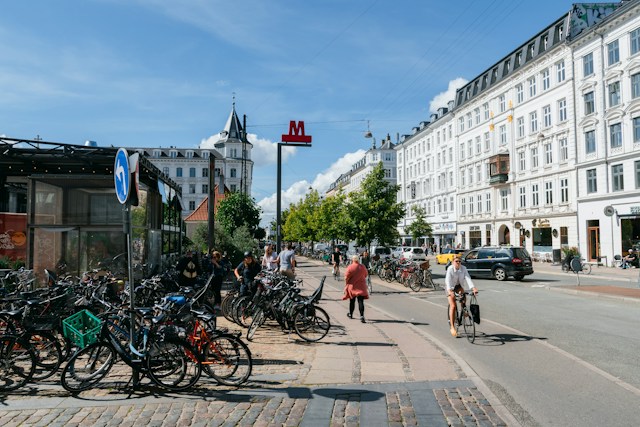Active transportation has become a central theme in urban planning, and it is an essential element in the creation of resilient, sustainable, and healthy communities. Urban planners are actively working on ways to ensure that our cities are less reliant on car travel, and more supportive of active modes of transportation such as walking and cycling.
The emphasis on active transportation stems from a variety of factors. From reducing traffic congestion to improving public health, and from enhancing community integration to conserving energy, the benefits of active transportation are numerous. In this comprehensive guide, we will discuss the concepts of sustainable urban planning and active transportation, and explore how the two are interconnected.
A voir aussi : How does cultural heritage preservation contribute to national identity and tourism?
Promoting Active Transportation through Urban Planning
Active transportation refers to any form of human-powered transportation, the most common forms of which are walking and cycling. However, it can also include other modes of travel such as skateboarding or wheelchair use.
Urban planning plays a significant role in promoting active transportation. By developing infrastructure conducive to walking and cycling, cities can encourage residents to choose these healthier, sustainable modes of transportation over cars. This can involve the creation of dedicated bike lanes, pedestrian-friendly streets, safe and accessible public transit facilities, and other similar initiatives.
Lire également : Why opt for ephemeral tattoos ?
Reducing Car Dependence: A Goal of Sustainable Urban Planning
In today’s urban landscapes, cars often dominate the transportation scene. However, this dependence on cars presents several issues, including environmental pollution, traffic congestion, and health risks related to sedentary lifestyles.
Sustainable urban planning aims to mitigate these problems by reducing car dependence. It does so by creating environments that are conducive to alternate forms of mobility, thereby promoting active transportation. This involves designing cities that are not just walkable and bike-friendly, but also well-connected by efficient public transport systems.
Fostering Health and Safety through Active Mobility
Active mobility, which includes walking, cycling, and other forms of non-motorized transportation, provides numerous health benefits. Regular physical activity can prevent various health conditions, including heart disease, diabetes, and obesity.
Urban planning can foster health and safety through the promotion of active mobility. By designing safe and comfortable walking and cycling paths, ensuring easy access to parks and recreational facilities, and implementing traffic calming measures, cities can encourage their residents to engage in regular physical activity, thereby improving public health.
The Role of Community Engagement in Transportation Planning
Community engagement is a crucial aspect of sustainable urban planning. It involves actively involving the community in the planning and development process to ensure that the solutions are tailored to their needs and preferences.
In the context of transportation planning, this could involve engaging the community in identifying traffic issues, proposing solutions, and implementing plans. By taking into account the community’s input, urban planners can ensure that the transportation infrastructure meets the needs of the community, thereby promoting active transportation and reducing car dependence.
Energy Conservation: A Benefit of Active Transportation
Active transportation modes, such as walking and cycling, require no fossil fuels and produce no emissions, making them the most sustainable forms of transportation. By reducing car dependence and promoting active transportation, cities can significantly lower their energy consumption and carbon footprint.
Urban planning plays a pivotal role in this regard. By designing cities that are conducive to walking, cycling, and public transportation, urban planners can foster a culture of active transportation, thereby contributing to energy conservation and environmental sustainability.
In conclusion, sustainable urban planning and active transportation are intimately connected. By designing cities that are conducive to walking, cycling, and public transportation, urban planners can promote active transportation, reduce car dependence, and contribute to the creation of healthier, safer, and more sustainable communities.
The Impact of Active Transportation on Climate Change and Air Pollution
Active transportation, such as walking, cycling, or the use of non-motorized wheel vehicles, significantly contributes to reducing air pollution and combating climate change. This is primarily because these modes of transportation do not rely on fossil fuels, thereby producing zero carbon emissions.
As per various studies indexed on Google Scholar, there is a direct link between increases in active transportation and reductions in greenhouse gas emissions. Moreover, active transportation also aids in decreasing traffic congestion, a significant contributor to air pollution in urban areas.
Urban mobility, when propelled by active travel, plays a substantial role in curtailing climate change. Sustainable transportation options such as electric vehicles also help bridge the gap between the necessary long-distance and urban travel, without adding to the carbon emissions.
However, the transition toward sustainable transportation is not just about introducing electric vehicles or enhancing public transport infrastructure. It requires a significant paradigm shift towards prioritizing active transportation options like walking and cycling. Urban planning can play a pivotal role in this transition.
Sustainable urban planning can incorporate strategies to promote active travel, such as developing an extensive network of bicycle lanes, ensuring pedestrian-friendly streets and neighborhoods, and creating safe, convenient, and accessible public transportation systems. These actions can drive a shift from car-centric cities to human-centric cities, ultimately reducing carbon emissions and mitigating climate change.
Key Takeaways and the Future of Sustainable Urban Planning
In the face of climate change, population growth, and urbanization, sustainable urban planning has emerged as a critical tool to shape the future of our cities. It focuses on reducing car dependence, promoting active transportation, and fostering a culture of sustainability, all of which are essential to creating resilient, healthy, and sustainable urban communities.
Active transportation is at the heart of sustainable urban planning. By promoting modes of transport such as walking and cycling, cities can improve public health, reduce traffic congestion, and contribute significantly to mitigating climate change.
Moreover, land transportation can be revolutionized by integrating traditional modes of transport with sustainable alternatives like electric vehicles and efficient public transport systems. These not only reduce carbon emissions but also enhance urban mobility.
Community engagement is a crucial element in this process. It ensures that the solutions proposed by urban planners align with the needs and preferences of the community.
Finally, the switch to active transportation brings about significant energy conservation, leading to a reduction in carbon footprint and contributing to environmental sustainability.
In conclusion, the promotion of active transportation and the reduction of car dependence through sustainable urban planning can pave the way for the creation of healthier, safer, and more sustainable communities. As urban planners and policymakers, embracing these strategies is our best bet to tackle the challenges posed by climate change, urbanization, and public health, while ensuring the sustainable development of our cities.






